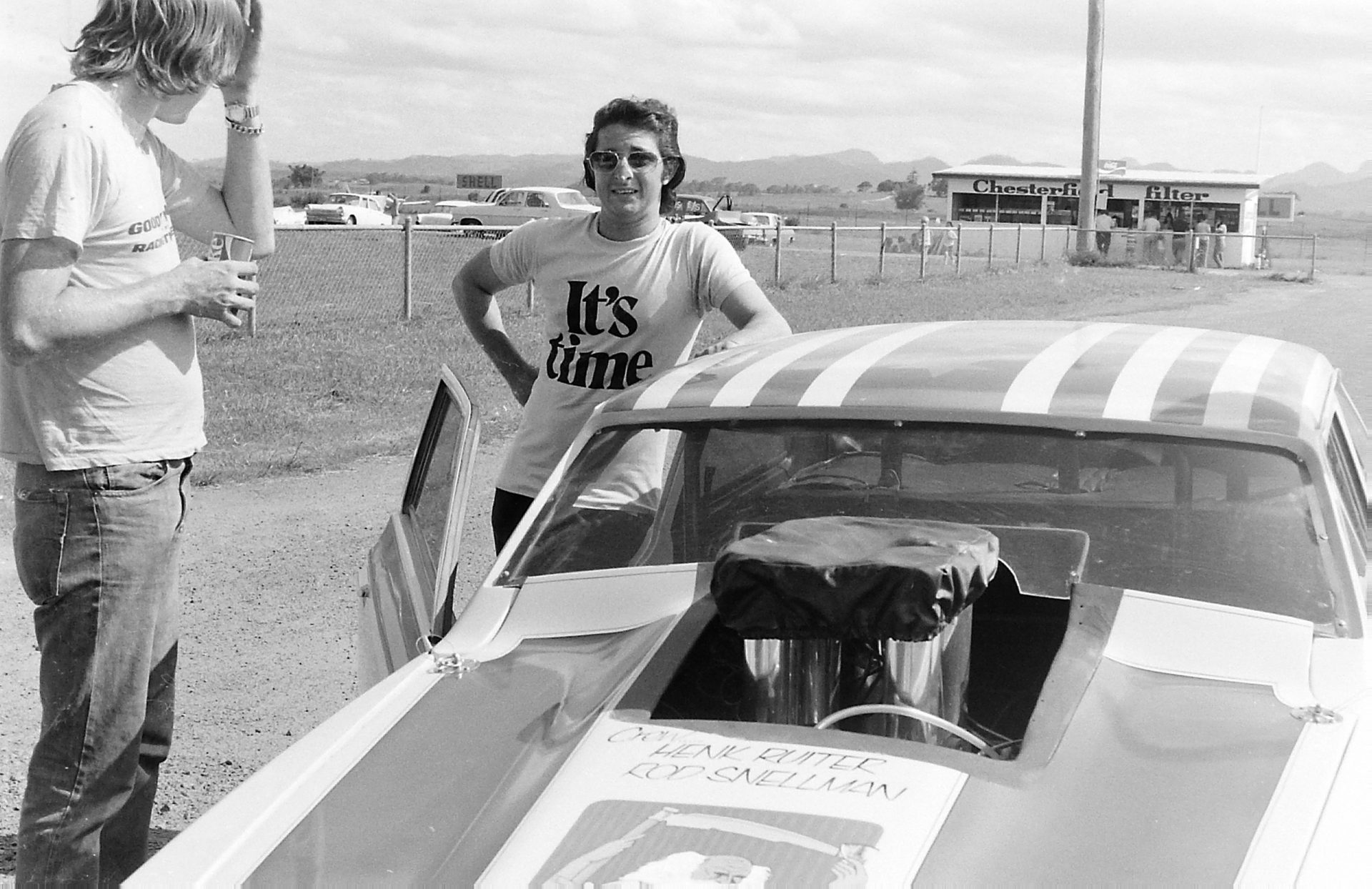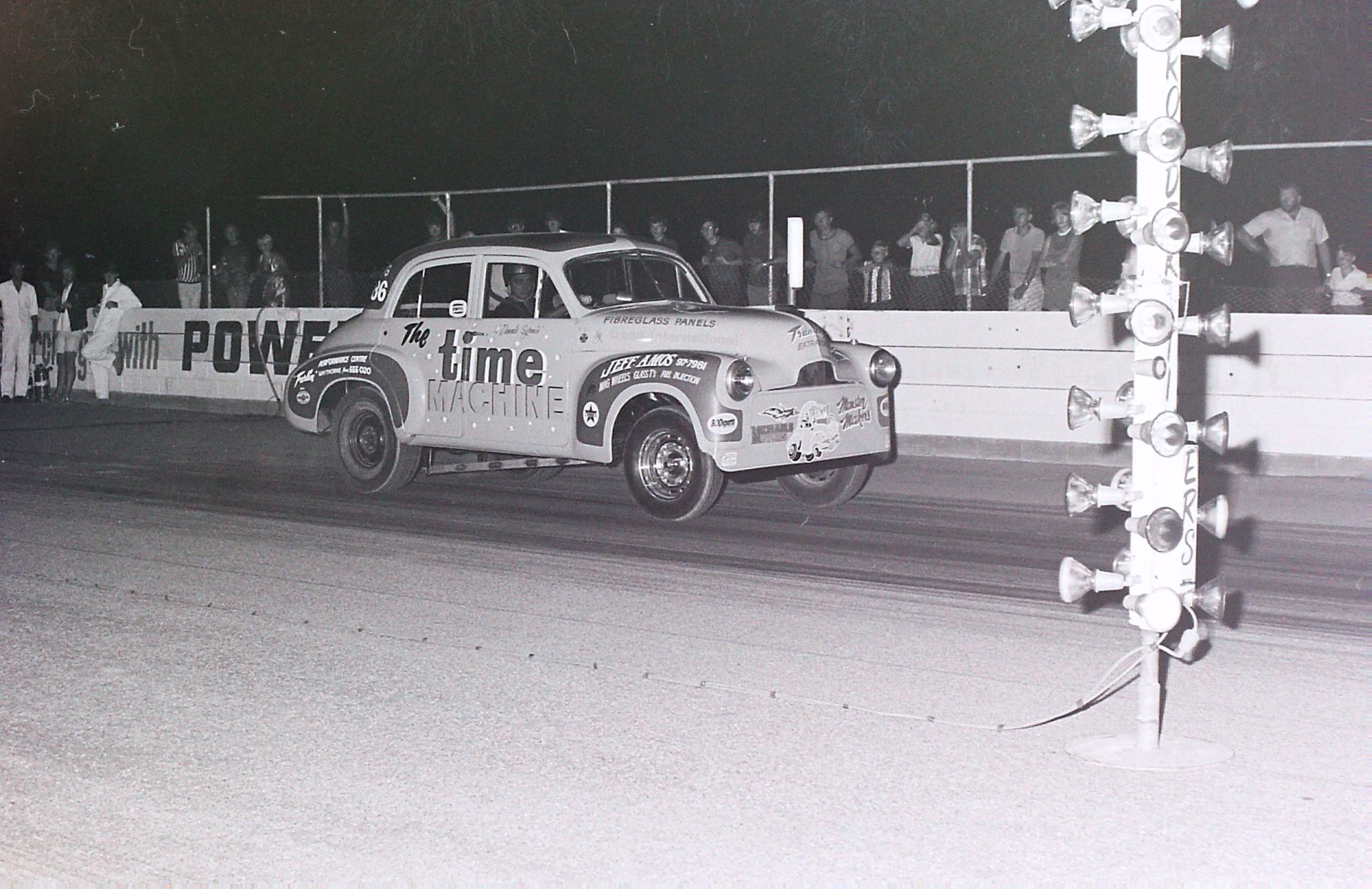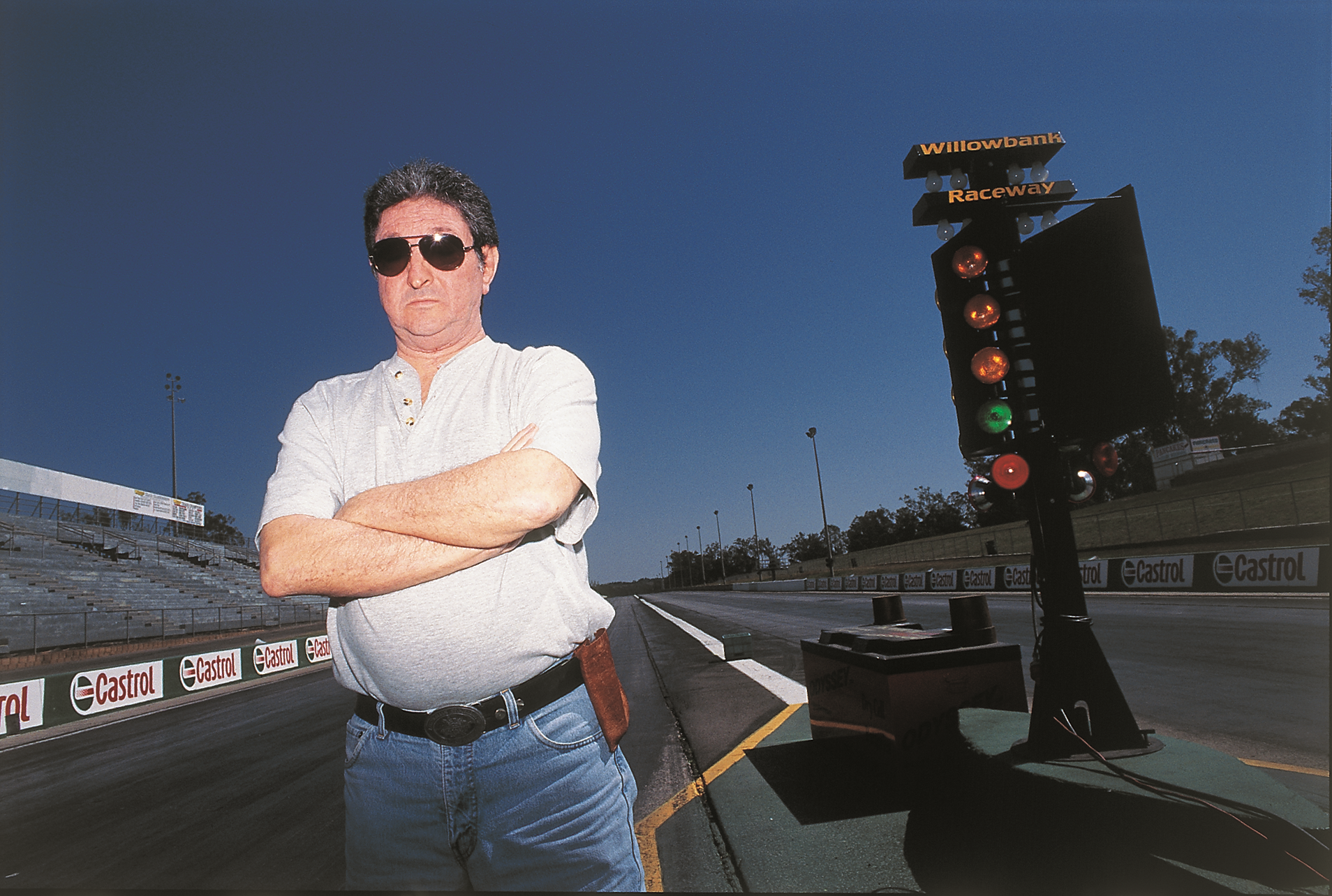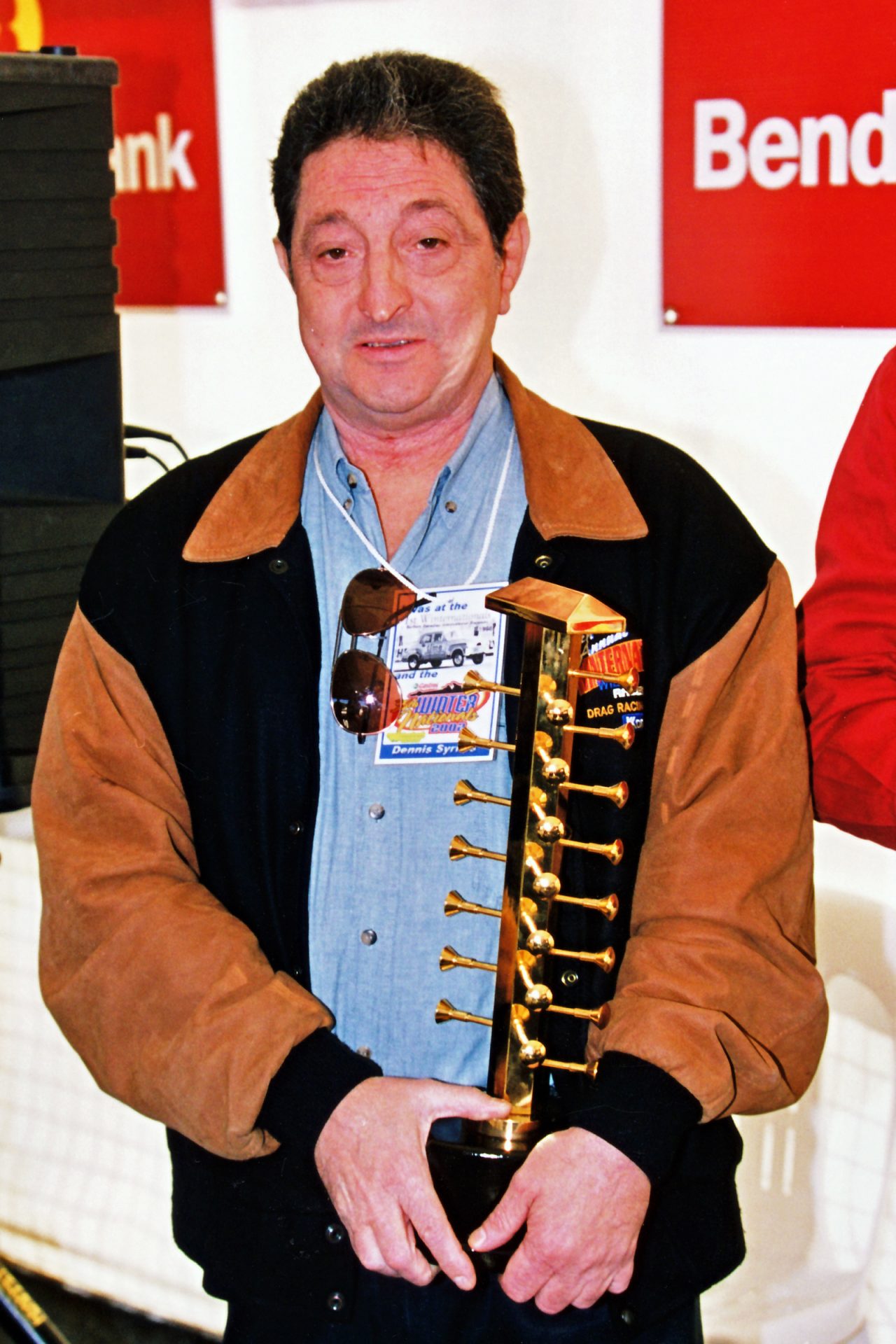
In recognition of Dennis Syrmis’ enormous contribution to the sport of drag racing in Australia, the NDRC’s Aeroflow Sportsman Championship national point score winner will be awarded the Dennis Syrmis Trophy. The prestigious award will be presented to the winner later in the year, following the Winternationals.
It is generally acknowledged that few individuals have contributed as much to the advancement of Australian drag racing as Dennis and the reason he stands out is that his endeavours stretched across the three main areas of the sport – racing, national governing organisation and track manager/promoter.
Dennis lived and breathed drag racing and his great passion was to see the sport provide a variety of racing formats to attract competitors and provide entertainment for the public. He had the knack of thinking and seeing forward and to know what effect changes to rules would have on the sport’s future.
Dennis modernised and Australianised a sport adopted from the United States. This process continued right through his roles as both national director of the governing body and Willowbank Raceway manager. In his own words, he “never hesitated to initiate change when change was due’’ and often did so in the face of opposition that would have been far too intimidating for most people. In almost every instance, he was proved to be correct.
All his endeavours for the sport were genuine. Nothing Dennis ever did in the sport benefited him personally, either financially or in the area of racing competition. During the construction phase of Willowbank, Dennis worked for nothing because he had faith in what they were trying to achieve. Despite pressure from the board of Willowbank Raceway once the track opened, he often declined wage increases over many years because that money would have to come out of general revenue.
Dennis was not only a great administrator. He was also a fierce and respected racer who won the Nationals in Gas eliminator in 1970 and 1972. A racer who won the Nationals in those days was considered the national champion.
Dennis began his involvement in drag racing as a competitor and earned fame as the driver of the popular “Time Machine’’ and “Little Gas’’ cars in the 1960s and 1970s, but from the very early stages, he demonstrated an instinct to lead. While eventually moving on to an administrative role, Dennis still competed at various levels in the sport from 1965 until the 1990s.
In 1973, Dennis, then the South Queensland Division delegate to the Australian Hot Rod Federation, assisted a number of the sport’s leaders to plan and implement a strategy which saw drag racers break away from hot rodders and form the Australian National Drag Racing Association (ANDRA). With drag racing separated from the show/street activities of hot rodders, the sport blossomed.
Following the introduction of the new governing body devoted solely to drag racing, Dennis pushed for the implementation of rules that introduced handicap racing. All racing had previously been a heads-up or even start, giving an unfair advantage to those classes which allowed the biggest engines. Dennis saw that this was a limiting factor in participation rates and the sport grew enormously after this change.
John Storm resigned as ANDRA national director in July 1974, handing the sport’s administration to Dennis, who had been deputy national director.
In 1975, Dennis conceived and implemented the Australian Drag Racing Series, which created for the first time a true national series that culminated in a season-ending Grand Final event. Until then, the sport’s champions had been determined by winning on one day of the year at the Nationals.
Also in 1975, Dennis instituted the Injured Drivers Fund, which for the first time provided insurance cover for drivers, riders and their crews against injury at ANDRA-sanctioned drag racing events.
Cups of all shapes and sizes had been used as win trophies for Australian drag racing champions since the sport began in the 1960s, but in 1975 Dennis came up with the concept for one of the drag racing world’s most outstanding awards, the Christmas tree championship trophy.
Observing bracket racing in the United States in 1979 convinced Dennis of the need for Dial-Your-Own in Australia and in 1980 he drafted the policies to create DYO eliminators. These were pushed through by Dennis and implemented in 1981, despite fierce opposition in some quarters. The subsequent massive increase in entry numbers vindicated the position he took, and it is recognised as one of the reasons grassroots drag racing is stronger in Australia than any other nation except Canada and the United States.
Dennis resigned as national director of ANDRA in 1983 to take up the role of manager of Willowbank Raceway and he left the national body in a secure financial position due to his sound business management.
The construction of Willowbank was a joint effort by a large number of people but all would acknowledge that it was Dennis’s drive, leadership and enthusiasm that ensured it happened. He was Willowbank manager from 1983 until 2002 when he retired for health reasons. With Dennis at the helm, the track grew from a basic facility in 1985 to a multi-million-dollar raceway by the 1990s.
In 1992, Dennis presented a proposal to ANDRA’s National Control Council that the Winternationals be elevated to national championship status as compensation for Melbourne’s Calder Park being allocated the Nationals for a contracted period of time and Sydney’s Eastern Creek having the Grand Finals on a permanent basis. The Willowbank Winternationals grew to become the largest championship drag race outside of North America and it was Dennis’s vision that once again produced an event that was a huge success.
While many countries around the world simply adopted the NHRA or IHRA class systems, Dennis molded the US concepts with his own to come up with what turned out to be a very successful formula for the Australian scene. The creation of the Wild Bunch group of supercharged sedans, initiated by Dennis, is acknowledged as one of the most significant developments in the advancement of the sport. His observation of the US Wild Bunch led him to believe this form of racing would work well in Australia. He was proved correct.
This style of racing eventually evolved into an eliminator called Top Doorslammer that in 1996 became a fully-fledged Group One bracket. It went on to become the largest of the six Group One Australian eliminators. Other hugely successful eliminators started by Dennis include Supercharged Outlaws and Super Street.
When Super Sedan grew too large and unwieldy to handle, in 1987 Dennis created a second major sedan eliminator called Super Street that provided an even easier entry level for beginners to the sport. Split-seeding, a simple and effective manner of managing the huge Group Three DYO fields and avoiding large numbers of first-round single runs, was also introduced by Dennis to Australian racing in the late 1980s.
After the three-amber Christmas tree became standard in the US, Dennis fought to have it accepted in Australia. In 2010, the Willowbank Raceway quarter mile was named Dennis Syrmis Way.
Dennis passed away in December, 2013.


Dennis was a natural at racing. Once Dial-Your-Own handicaps came in you could tell his driving was good. Before the days of reaction times no one could tell if racers were really good at the lights, or just always had more horsepower.
When DYO came in it sorted out very quickly who the best drivers were, and Dennis certainly proved enough times that he was good. He loved racing but suspended his on-track activities until Willowbank was up and running and only then did he return to it briefly with a Funny Car, winning Modified in February 1988. He only raced for a short period as he could no longer combine his duties as a manager with his love of racing, and Willowbank came first.
He limited his racing throughout his administration as national director of ANDRA and when he became manager of Willowbank he had enforced breaks when he needed to concentrate on projects at the track.
He gave up the chance to compete at The First Drag Race because his personal satisfaction came second to the track’s best interests.
He competed in various eliminators, denying critics the opportunity of saying he was out of touch with competitors and racing.
That was one of his greatest strengths – that in his thought process he could look at a situation from all sides – as a competitor, governing organisation administrator, track manager – that’s why he was nearly always right and usually five years ahead of everyone else in his thinking.
He knew instinctively what was needed to change/improve/delete/add to the sport to help it grow.

